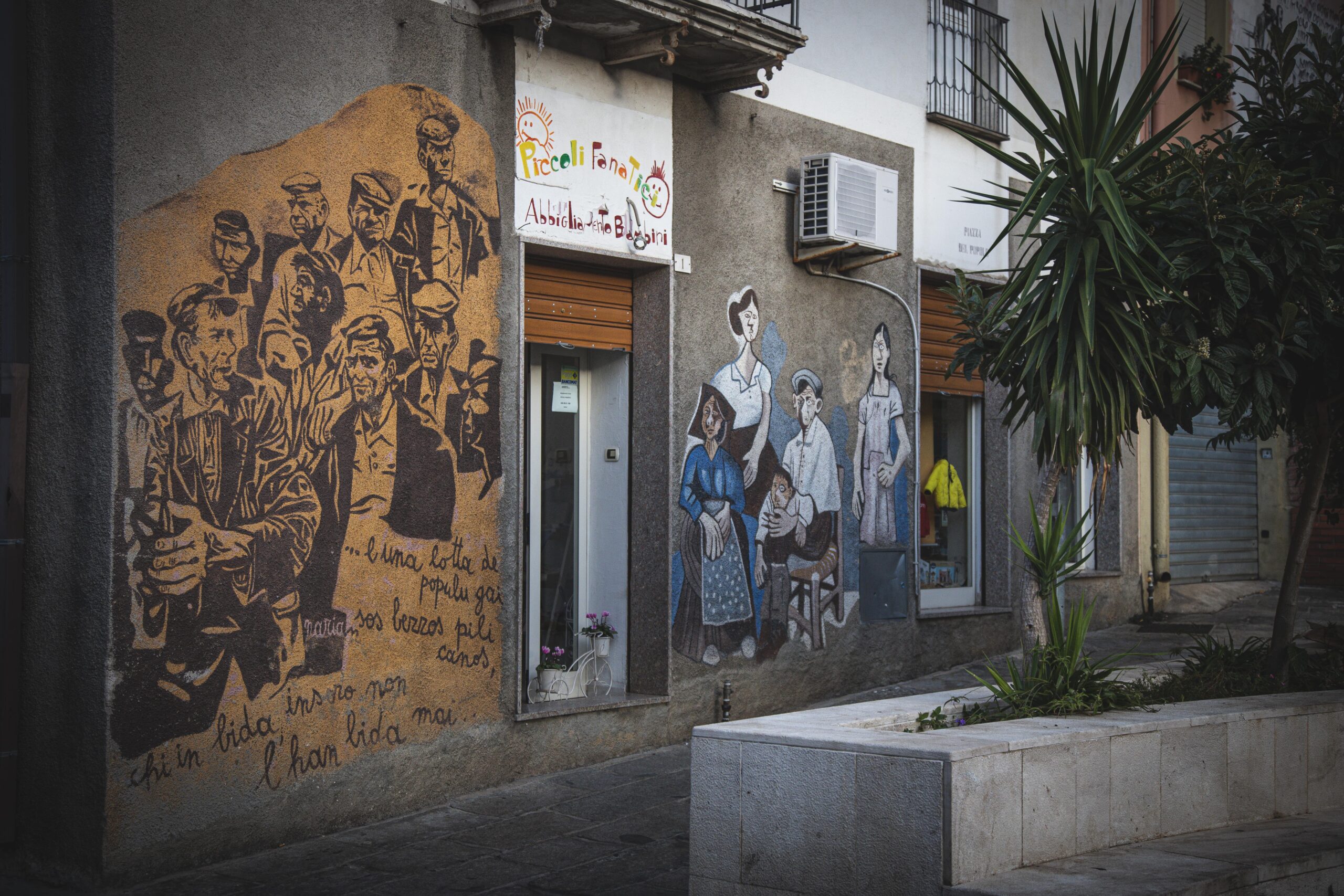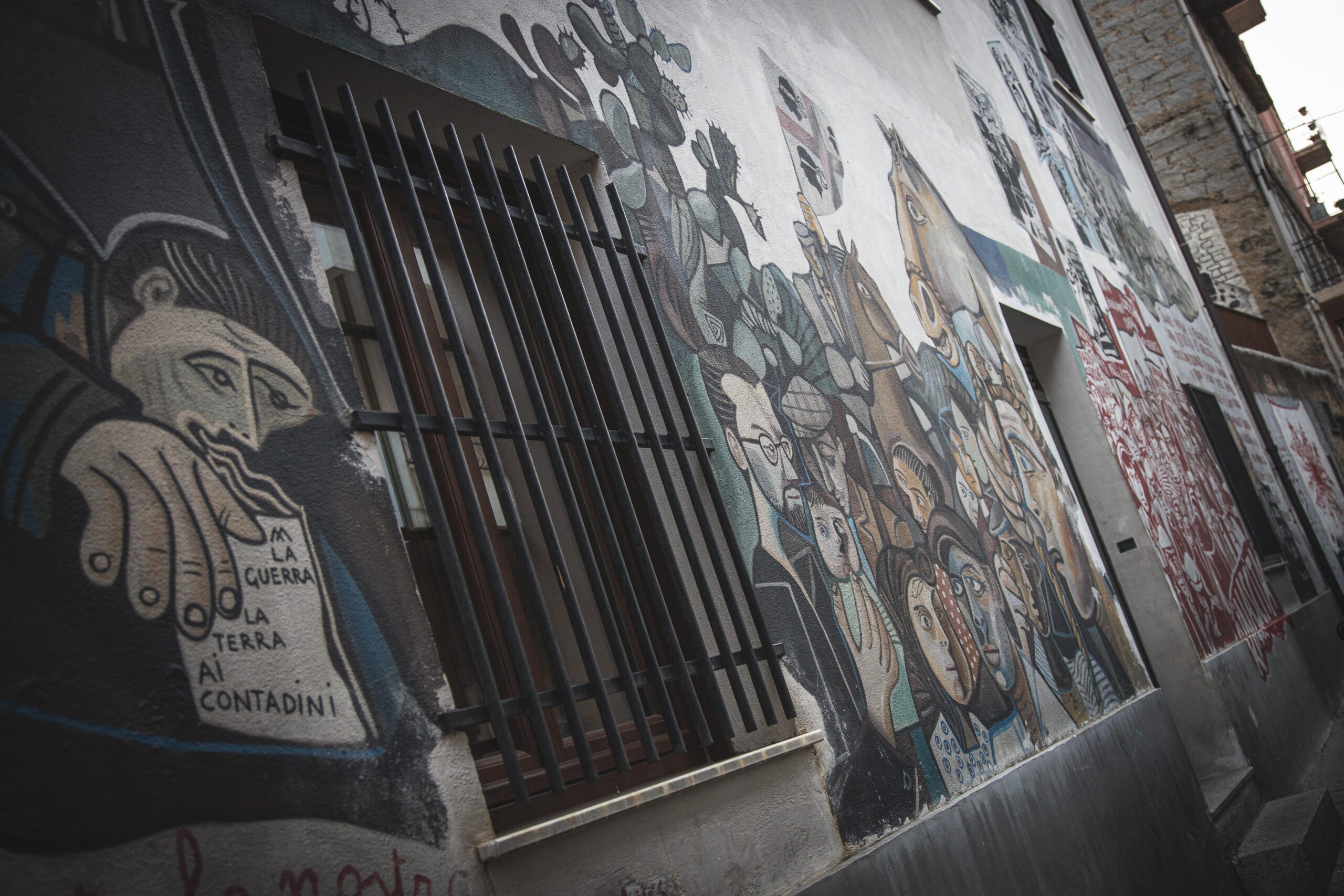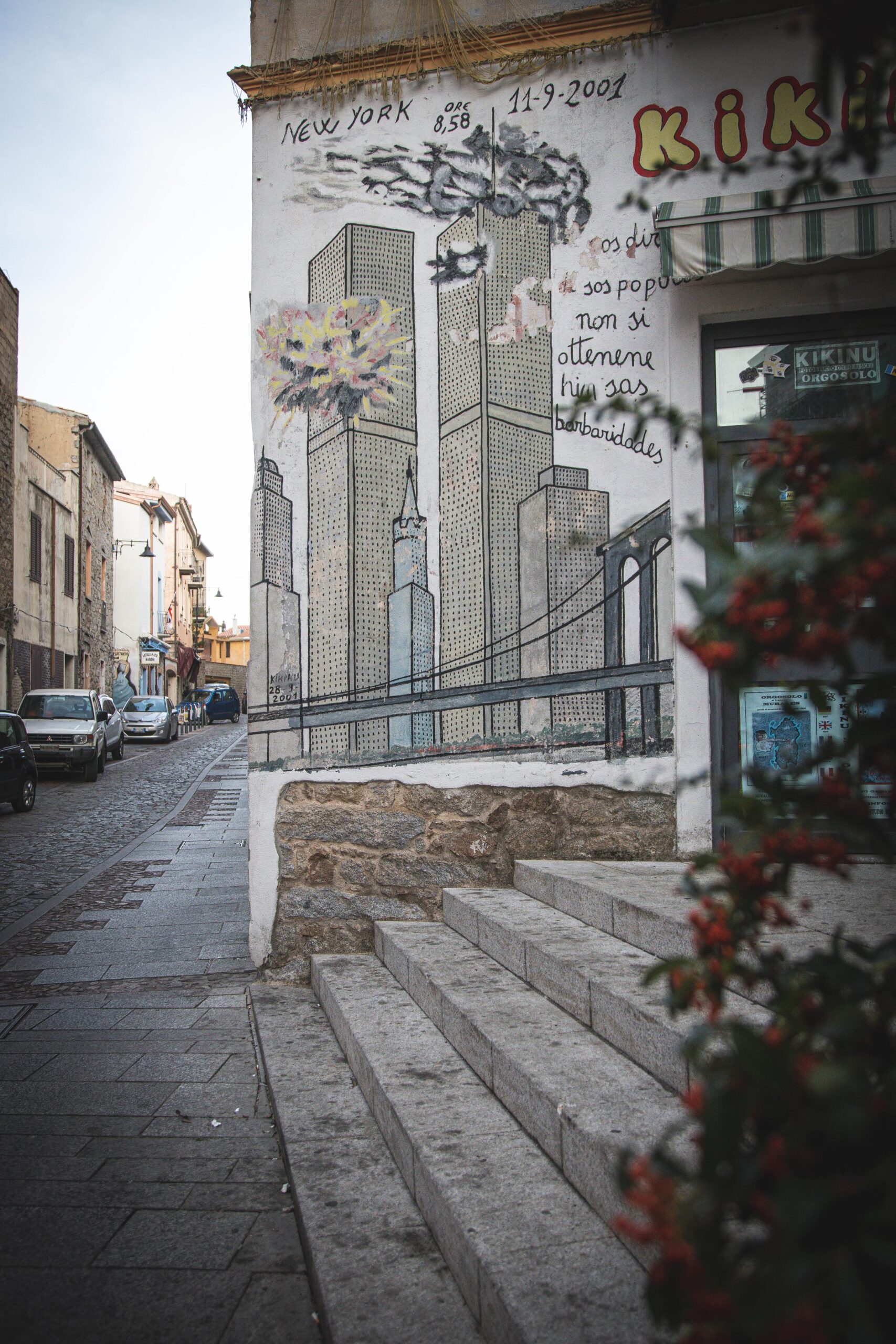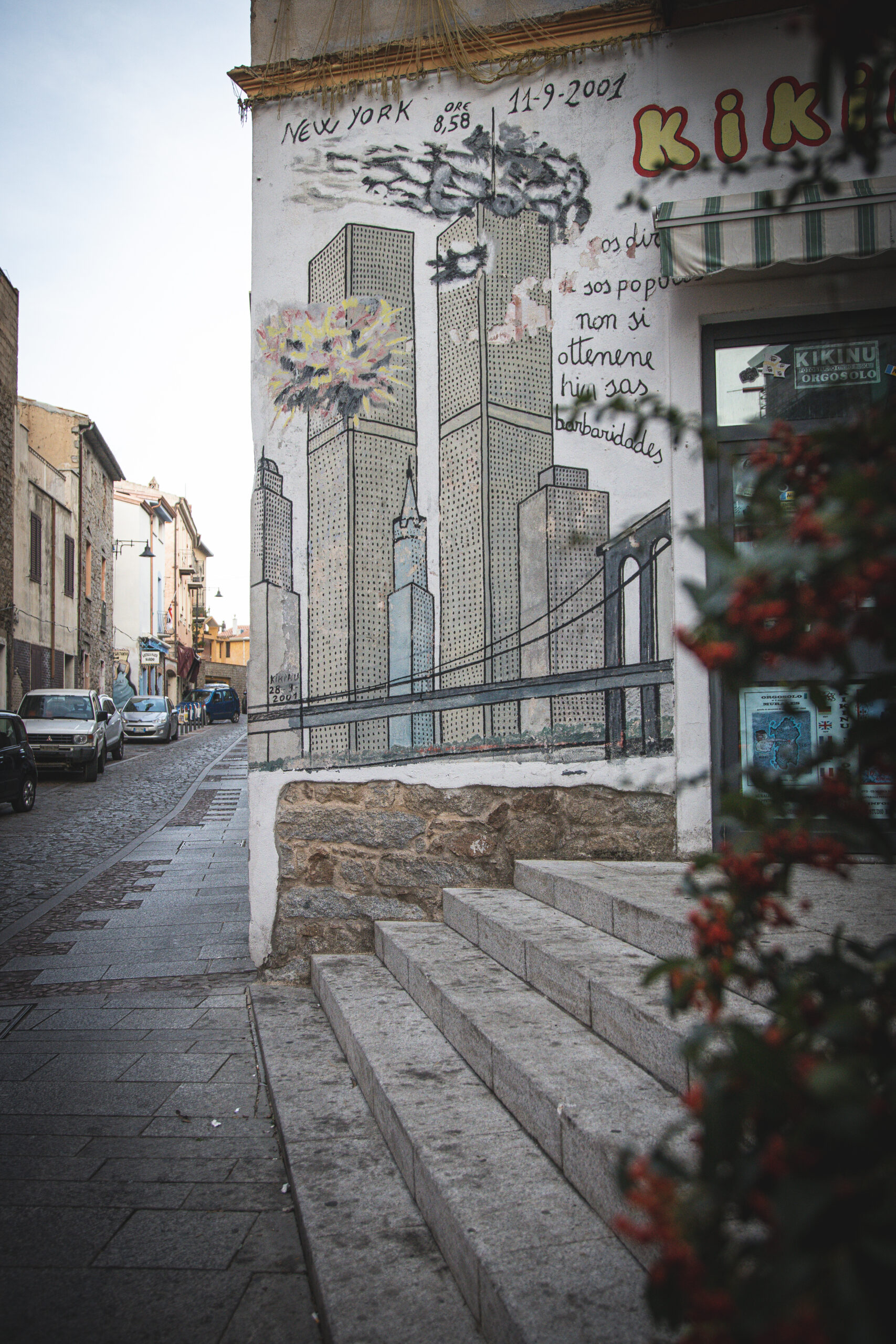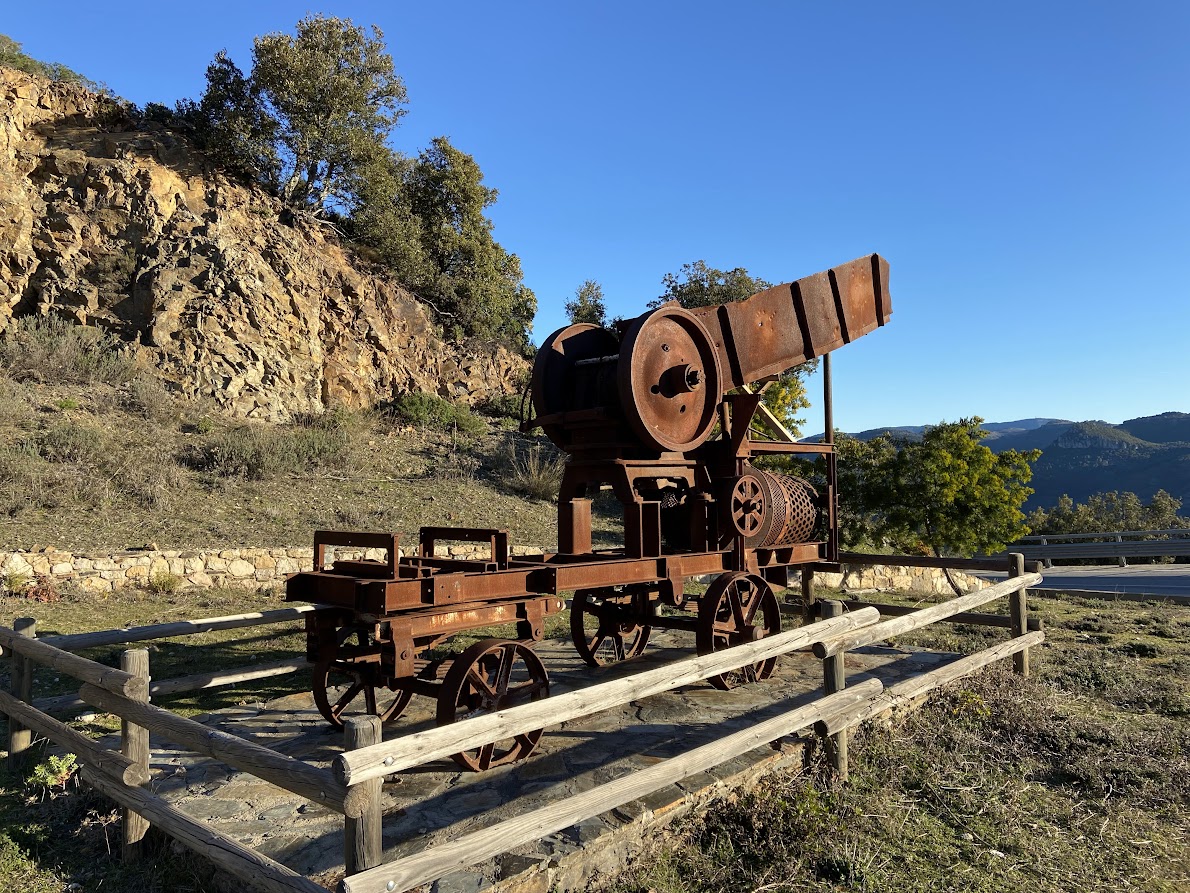
The Murals of Orgosolo
Only a few cities in Sardinia have gained such international fame as Orgosolo. A city of bandits, a city of murals, a city with breathtaking wildlife that doesn’t seem very welcoming at first glance, but which will stay in your mind forever. It is located on the slopes of the Supramonte mountain range in the central-east of the island, at an altitude of about 620 meters and is inhabited by approximately 4,000 people. Orgosolo is known for banditry, which was still commonly practiced here even in the second half of the 20th century. You can still hear locals telling stories of rival clans abducting family members into the mountains and demanding ransom. And at the entrance to the city you can still notice the shot signs. But the most famous Orgosolo became for its grafitti or murals, „murales“ in Italian, which decorate local houses, streets and stones. The first mural was drawn in 1969 by the anarchist group Dioniso, which tried to draw attention to Sardinia’s social and demographic problems. Even the later paintings have often this particular political undertone, you can see murals with a war theme, or the topics describing the life of shepherds or the position of women in society and in working life. Others celebrate traditional costumes, tools and crafts or famous figures such as Giuseppe Garibaldi, Fabrizio de André, Antonio Gramsci and Picasso. In total, there are more than 200 murals, some of the original ones have been damaged by natural influences and others have been built over, but a large part of them remained in their original form thanks to frequent restoration. Even today new paintings are still being added. Although most of them are found on the walls of houses in the city center, some of the murals can also be seen on rocks and stones by the roads leading out of the village. Last but not least, Orgosolo is also known for its tenor singing, which was included on the UNESCO intangible heritage list for its uniqueness.
